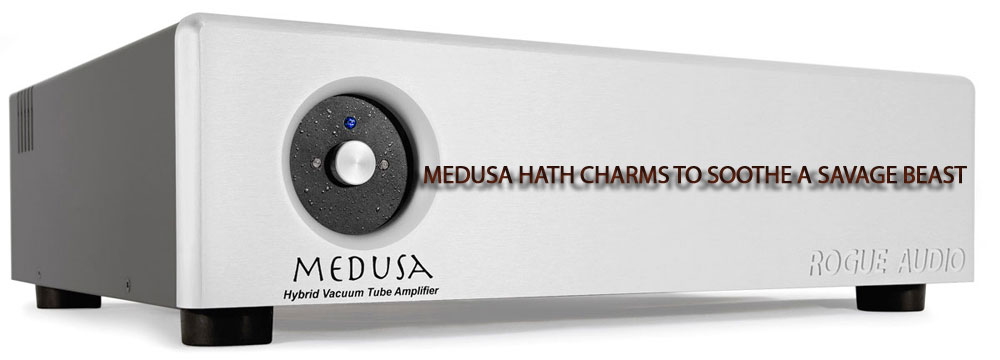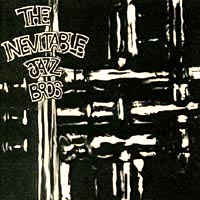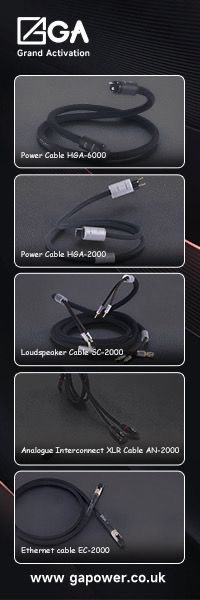Rogue Audio Medusa TubeD™ Amplifier
Medusa hath charms to soothe a savage breast

I first met Rogue Audio’s CEO, Mark O’Brien many years ago at an audiophile get-together where some new speakers from Evett and Shaw were being demonstrated using Rogue Audio amplification. The sound was big, bold, and dynamic and I found Mark O’Brien to be a very personable and knowledgeable. Soon after that meeting I got in touch with O’Brien and arranged to review his then-new tube amplifier, the Rogue Audio model 88. This was the start of my healthy respect for Mark O’Brien and Rogue Audio’ products and I soon found myself reviewing the Rogue 66 and 99 preamplifiers, which were musically satisfying units at sensible prices. And I liked that the Rogue products were designed and made in the USA.
Since that time, Rogue has introduced a stable of great products with names taken from Greek gods and legends, and now, with products like the new Sphinx and Pharaoh integrated, O’Brien has entered into ancient Egyptian lore. This review will focus on the Rogue Audio Medusa triode/Class-D hybrid amplifier, which, as I found, is more than just a Class D amplifier preceded by a tube line amp. Rogue also offers a less powerful version of the Medusa dubbed the Hydra that is rated at 100 watts/channel instead 200 watts/channel for the Medusa (ratings @ 8 Ohms, but double into 4 Ohms).
The Medusa uses two UCD-400 Hypex Class-D modules mated to a well-conceived tube input and driver stage. The tube stage was interwoven into the Hypex modules bypassing the solid-state Hypex input and driver sections. This is what Rogue’s trademarked TubeD™ technology refers to and what other amplifiers do not provide.
Inside the Medusa is a linear (non-switching) power supply that uses beefy toroidal transformers with added capacitance for sustaining high power. O’Brien says the linear supplies contribute to the Medusa’s prodigious bass performance and the amp’s ability to maintain solid power delivery at times of high demand. He tends to shy away from switching power supplies because of their lower power reserve and the high-frequency noise they generate.
Besides the high power rating of 200 watts/channel into 8-Ohms and 400 watts/channel into 4-Ohms, other noteworthy specs include a high damping factor of over 1000 for superior speaker (especially woofer) control, and unusually high input impedance of 200 k-Ohms. The high input impedance makes it a super-easy load for virtually any preamplifier or source to drive. I thought my Wyred 4 Sound STI-500 had high input impedance at 60 k-Ohms, but the Medusa’s is over 3X higher. If you’ve ever heard audiophiles speak of having a poor impedance match between their amp and preamp, the Medusa’s extra-high impedance input stage virtually assures that this cannot occur. Indeed, the Medusa will reproduce the full frequency range and dynamic envelope of sound its source component is capable of providing.
Mark O used careful and controlled listening tests in his own Wilson Sasha-based system with his higher-priced Rogue tube amplifiers to fine tune the mating of the tubes to the amplifier section of the Medusa. Then he took the prototype around to friend’s homes during different stages of development to get their feedback and to hear how the Medusa would perform in different systems. This was crucial to its evolution and final voicing. Mark wanted the relaxed, spacious and musical presentation of tubes without sacrificing fine detailing, low-noise, and finesse of solid-state.
 Basic operation and set up
Basic operation and set up
The Medusa is a fairly Spartan basic power amplifier. It features both RCA and XLR Balanced inputs and one pair of heavy-duty gold-plated speaker binding posts. There is a master Off/On toggle on the rear panel and on the front panel there is a push button for turning on the tube input stage and taking the Medusa out of Standby. This switch is surrounded by three LED’s that indicate the status of the amp. A red LED that lights when the amp is not operational, a yellow LED to indicate “Standby.” After the switch is pressed, a blue LED appears and a soft-start circuit is engaged. When the yellow standby LED disappears the amp is fully operational and ready to rock. The power-up sequence is intuitive and easy to understand.
I installed the Medusa in my large-room reference system driving the VMPS RM-40 hybrid ribbon line source speakers in my 30’ x 14’ room with high vaulted ceiling. The Medusa took the place of my long-time favorite amp, the Wyred 4 Sound STI-500 Class-D amplifier, which employs the B&O ICE-Power modules. The STI-500 can provide in excess of 550 watts/channel into the VMPS’s 4-Ohm load as opposed to the 400 watt/channel Medusa. In all honesty, since the VMPS produce more than 90dB at 1-watt input, I can’t say I ever pushed either amplifier to its true limit. And that is how I like it… lot’s of juicy power reserve!
Both amplifiers were connected to the high-current outlet in my PS Audio P3 Power Plant. The particular Medusa I received had been used in another review so it was mostly broken in when it arrived.
The tubes that Rogue normally supplies with the Medusa are the JJ long-plate ECC82’s. I didn’t remove the cover of my review sample to confirm this as the amp sounded very good from the get-go and I didn’t want to mess with it. Of course I realize that no matter what tubes are supplied by the manufacturer there are those audiophiles who will want to try their favorite 12AU7 or ECC82 tubes—just because. My only comment is: “Party On!”
A time to muse
The first thing I noticed about the Medusa was its superb bass reproduction. It was deep alright, but more than that it was more articulate than that of any other amp I had experienced in my system. On rapid drum rolls I could hear each tap of the skin as a distinct beat. With other amps such fast drum rolls tended to smear together more. Also, runs on bass guitar were very distinct and live-like. Truth be told, the Medusa controlled the four 10-inch woofers in my VMPS towers better than any amp I’ve ever tried. My speakers are flat to below 25 Hz so I considered this an excellent test.
 Another thing I noticed was that the reproduction of stringed instruments like violins and cellos was particularly sweet and convincing. In fact on Brandi Carlile’s Bear Creek CD (Columbia 88691 96122 2), there is a wonderfully warm sounding cello on the song “Hearts Content” that touches the soul.
Another thing I noticed was that the reproduction of stringed instruments like violins and cellos was particularly sweet and convincing. In fact on Brandi Carlile’s Bear Creek CD (Columbia 88691 96122 2), there is a wonderfully warm sounding cello on the song “Hearts Content” that touches the soul.
My notes say that the powerful kick drum on Carlile’s album issued forth with “bass that can kill.” Although I didn’t put this to the test I must admit I was slain by the Rogue’s powerful dynamic command of this particular album. And I’d be remiss if I didn’t divulge that Brandi’s powerful voice came across with all the passion she is capable of mustering… which is quite considerable.
When I tried playing one of my older electronically enhanced CD’s, namely, Big Audio Dynamite II’s The Globe (Columbia CK 46147), I heard layer upon layer of random vocals and tiny sounds that I had never noticed before… or certainly not to the degree the Medusa portrayed. The soundstage was HUGE and sounds were floating front-to-back and left-to-right in a most captivating manner. I was entranced. It seems the Medusa provides the kind of low bass and upper frequency ambience to support a very expansive soundstage that is both very wide and quite deep.
And on the last track “The Tea Party” the male vocal sounded clear, dynamic and more natural than I had heard previously while the accompanying violin was outstanding.
I must admit that I was having too good of a time listening to my system with the Medusa providing the power. So good that I played through many albums without bothering to take notes—so lost was I, in the beauty of the music.
 But I did break out my old CD of The Inevitable Jazz Brothers (Rosano Brothers—self-titled, self-produced, no longer available) because I wanted to hear how the Medusa would handle brass instruments and a banjo. I was not disappointed.
But I did break out my old CD of The Inevitable Jazz Brothers (Rosano Brothers—self-titled, self-produced, no longer available) because I wanted to hear how the Medusa would handle brass instruments and a banjo. I was not disappointed.
Again, the Medusa’s rendition of the Jazz Bros. album was the most natural reproduction I have yet experienced. The trumpet and baritone sax were spot-on, and the banjo was never grating, the way it can be with lesser electronics. In fact the banjo was sweet and enjoyable. The strings did not have the sharpest bite I’d ever heard from this CD, but it was engaging and hard to fault Evan Dain’s sprightly performance.
In addition, the trumpet sounded virtually real on ”Whinin’ Boy Blues”. I could hear the brass of the horn vibrate in a tonally satisfying, organic way. And on “After You’ve Gone,” with the banjo, trumpet and baritone sax playing together I was just blown away. It was like being right there with the Jazz Brothers playing in front of me. And I did have the opportunity to hear them live, which is why I bought their album in the first place.
I haven’t said much about the Medusa’s treble performance but I should mention that the high frequencies are just as impressive and musically gratifying as the Medusa’s outstanding bass and midrange. Cymbals shimmered and I could hear their natural decay. And high-frequency percussion instruments were very well presented. The W4S amp has a bit finer focus in the treble and possibly a touch more detail, though I would not call it more musically satisfying or more natural.
The Bottom Line
The bottom line is that I love the sound the Medusa provides in my system. The Wyred 4 Sound amp has been widely praised in various reviews and by many audiophiles in the various Internet forums. It is an excellent sounding amp and that is why it’s been my reference amplifier for the past 3 years.
Yet there is really no such thing as “the perfect amplifier,” and with the W4S although its inner detailing and focus is superb, and its sound is musical and non-fatiguing, I always wanted a bit more organic, smooth, and sweet sound… the kind of sound that in my experience only tubes provide.
And toward that end I tried using tube preamps and tube line-buffers to sweeten the sound of the W4S, and there was a minor improvement in smoothness, yet this still fell a bit short of delivering that big sweet spacious tube sound along with the detail. The Medusa better integrates the sound of a respectable tube input stage with the Class-D modules resulting in a more coherent and satisfying musical presentation overall.
Mark O’Brien’s goal in designing the Medusa was to create a powerful and efficient, low-maintenance amplifier that implements hybrid technology resulting in sound quality that emulates very good pure-tube amplifiers. And by that I mean tube amplifiers that create an output waveform that bears a good resemblance to the input waveform.
Did he achieve these goals? My answer is a resounding “Yes!” But there’s more to it than that because in my experience the Medusa is much quieter than any all-tube amp, and is capable of rendering more inner detail and subtle nuances than all but maybe the “best” (and highest priced) tube amps in existence. And that BASS! I don’t think even the best tube amp out there is capable of delivering the kind of bass articulation that the Medusa manages with ease. And in keeping with traditional Rogue value, the Medusa, at under $4,000 must be considered an outstanding bargain.
Undoubtedly there will be those die-hard valvoholics who will steadfastly hold onto their favorite metal box of glowing tube glory that sucks a couple of kilowatts of power from the wall outlet and doubles as a space heater, and that is okay by me. And if they refuse to give up their right to retube with $1,000 of NOS tubes every other year who can blame them in a land where excess is adored and celebrated?
So did I end up purchasing the Rogue Audio Medusa? Well, “Hell Yes!”


Manufacturer
Rogue Audio, Inc.
3 Marion, Brodheadsville, PA 18322
Phone: (570) 992-9901
Web: www.rogueaudio.com
General Features
– Large high performance torodal transformers
– Massive linear power supplies
– Balanced (XLR) and single ended (RCA) inputs
– Heavy-duty gold plated binding posts
– Two 12AU7 tube complement
– Short circuit protection
– Standby circuitry for solid state components
– Slow start circuit for extended tube life
– Machined aluminum faceplate
– Heavy (2 ounce) copper circuit board
– All precision components
– Fully tested, burned in, and auditioned
– 3 year limited warranty (6 months on tubes)
– – – – – – – – – – – – – – – – – – – – – – – – – – – – – – – – –
Specifications
Output power: 200/400 WPC 8/4 Ohms
– Input impedance: 200K Ohms
– Frequency response: 10Hz – 20KHz ± 1dB
– THD: – Input sensitivity: 1.0V RMS
– Dimensions: 18″ W x 15″ D x 5.5″ H
– Weight: Medusa 38 lbs
– Power requirements: 115/230V – 50/60Hz
Price: $3995
Stereo Times Masthead
Publisher/Founder
Clement Perry
Editor
Dave Thomas
Senior Editors
Frank Alles, Mike Girardi, Russell Lichter, Terry London, Moreno Mitchell, Paul Szabady, Bill Wells, Mike Wright, and Stephen Yan,
Current Contributors
David Abramson, Tim Barrall, Dave Allison, Ron Cook, Lewis Dardick, John Hoffman, Dan Secula, Don Shaulis, Greg Simmons, Eric Teh, Greg Voth, Richard Willie, Ed Van Winkle, Rob Dockery, Richard Doron, and Daveed Turek
Site Management Clement Perry
Ad Designer: Martin Perry





Be the first to comment on: Rogue Audio Medusa TubeD™ Amplifier